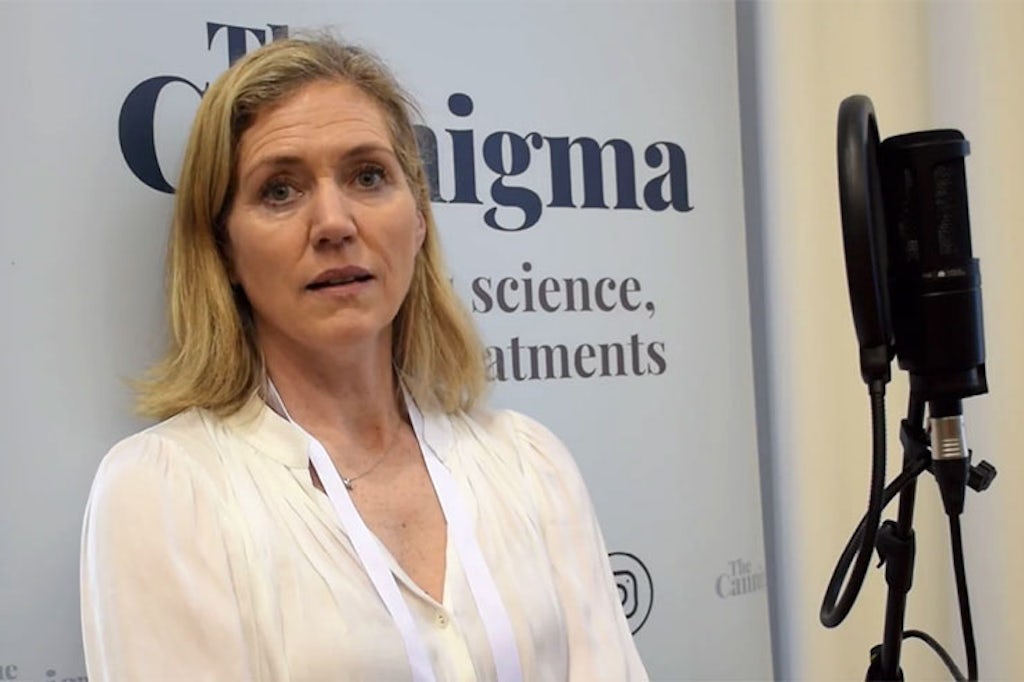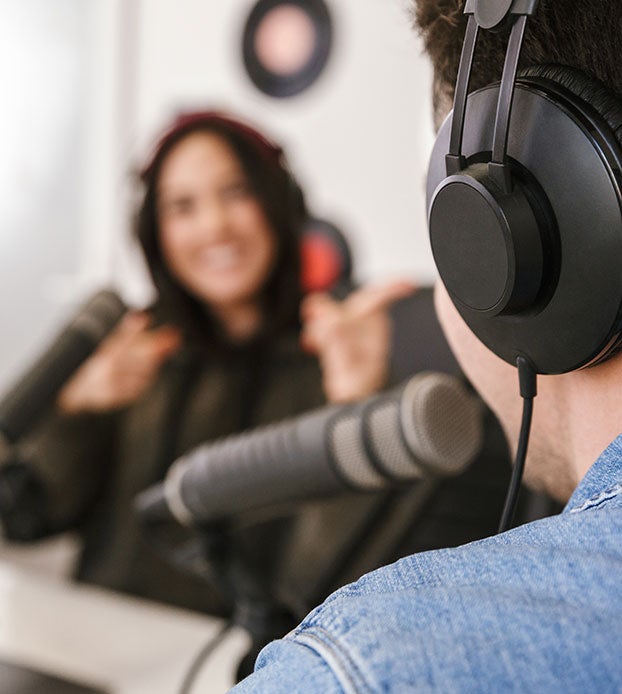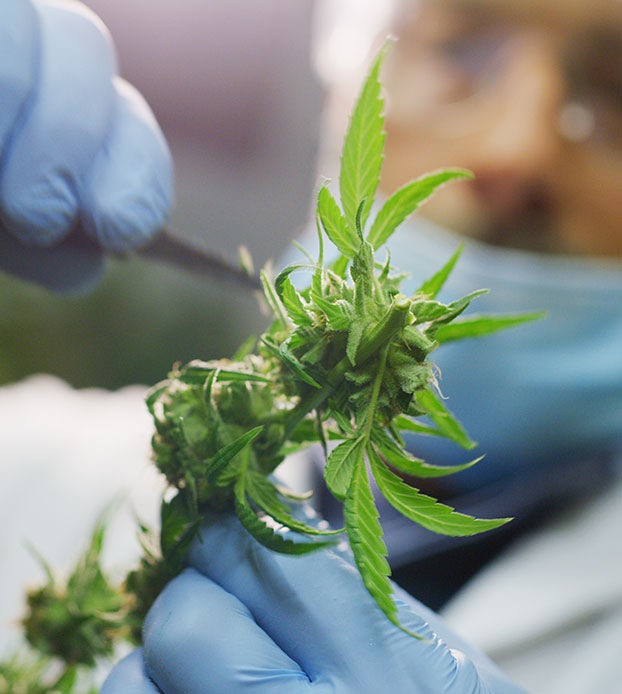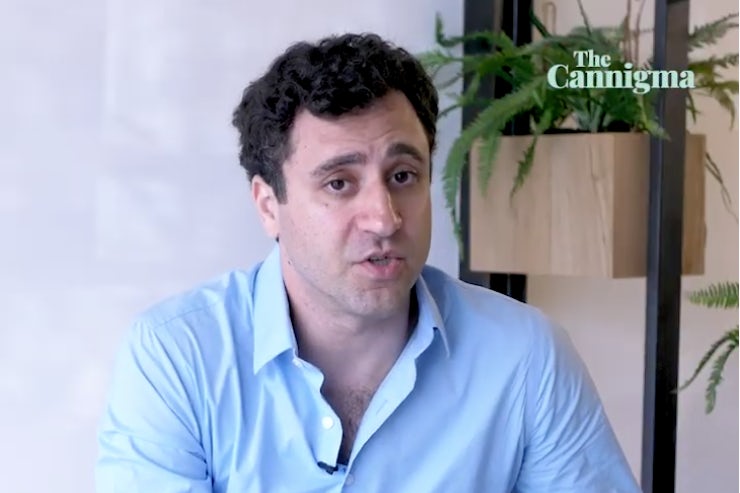When Catherine Jacobson’s three-year-old son had exhausted all of the treatments available for his rare, life-threatening form of epilepsy, she wasn’t about to just give up.
“I began hearing stories from families with children with severe epilepsy and that they were treating their kids with cannabis and they were reporting good outcomes,” Dr. Jacobson said on The Cannabis Enigma Podcast. “So of course, I was interested.”
Listen, subscribe on: Apple Podcasts | Spotify | Google Play
Those families, however, were making their own medicines from cannabis and there was no way to guarantee consistency. So she put her PhD in neuroscience to use and set up a laboratory in her garage to make her son a pure CBD extract.
Today Jacobson is the vice president of regulatory and medical affairs at Tilray, one of the world’s largest medical cannabis companies, after starting its clinical research division.

“I was absolutely infuriated to find out that we knew CBD was an anticonvulsant but nobody had developed it for 30 years,” she explained, referencing a 1980 clinical study conducted by medical cannabis pioneer Raphael Mechoulam.
“So I had a decision to make,” she said of her decision to pursue a career in cannabis research. “I knew […] that there are other patients out there living with other diseases besides epilepsy who deserve access to quality medical cannabis products now — and they don’t have time to wait for clinical development.”
Edited and mixed by Michael Schaeffer Omer-Man. Produced by Michael Schaeffer Omer-Man and Elana Goldberg. Music by Desca.
Full Transcript
Elana Goldberg: Okay. Catherine, thanks for joining me here today. Um, so, like so many people in the industry, uh, I know that your, uh, kind of journey with medical cannabis started off from your personal story. Can you tell us a bit about that?
Catherine Jacobson: Yes. So, our second child, Ben, um, started having seizures when he was 14 weeks old. And we knew nothing about epilepsy. We were told that he has a high likelihood of just growing out of it or being controlled by medication. He was one of the- the very, very unlucky infants with epilepsy that is not controlled by medication.
Elana: What type of epilepsy does he have?
Catherine: So he was born with a brain malformation called Polymicrogyria.. It affects a small part of his brain but often leads to very severe, treatment resistant epilepsy. The mutation that caused the Polymicrogyria is unknown so we can’t really —we can’t really say why he got that.
Elana: Right. Okay. And when did you first consider medical cannabis as a treatment for Ben?
Catherine: So let’s see, I was about… he was about three years old in 2012-
Elana: Wow.
Catherine: … when, you know, after three years of trying all of the available treatments, um, I decided to go back to train an epilepsy research at Stanford and I had happened to have my PhD in neuroscience before Ben was born, so quite a coincidence. Um, and it was during that year when I was at Stanford that I began hearing stories of… from families with children with severe epilepsy and that they were treating their kids with cannabis and they were reporting good outcomes so of course, I was interested. Um, they were giving their kids, um, like some of them were crushing up the cannabis and putting it in capsules.
Some of them were making butters with cannabis and giving a teaspoon a day or a teaspoon twice a day. Some were making suppositories so it was all over the map. Some were trying to extract, um, and everyone was doing something slightly different. Nobody knew exactly what was in the cannabis they were giving the children, right?
Elana: Right.
Catherine: They were just trying to do the best they could.
Elana: When was this?
Catherine: This was in 2012. And so at the same time that I heard these stories, I went to the… to PubMed and I found articles on the anti-convulsant activity of both CBD and THC. So both can be anti-convulsive. Now if you look at the data closely, you see that THC can be pro-convulsive in some cases.
Elana: Really?
Catherine: So whereas CBD isn’t. And these are in pre-clinical animal models. And, um, clinical trials had been done in the ’70s and ’80s on adults with a particular type of epilepsy, temporal lobe epilepsy. So I took all of that information and I decided for us, and again, I wanna stress that this was just a decision I made for us that CBD in doses of hundreds of milligrams was the safest thing for us to try. Um, so now, years- years later, after we’ve done trials and such, Ben is on a dose of 450 milligrams per day.
Elana: Ah, okay.
Catherine: That’s pretty high dose.
Elana: And how did you make a decision about the dose to begin with?
Catherine: So I looked at the papers and the adults were given, in one study, 200 milligrams per day, and the other study, 300 milligrams. But I also emailed [Raphael] Mechoulam, because he was an author on these studies, and I said, “Look, here’s my situation. What would you recommend based on your experience?” And he agreed that, you know, 200 to 300 milligrams was a good place to start.
Elana: It’s interesting, I’ve seen some data recently showing that, actually, children generally, uh, have higher dosage than adults, um, with CBD and also with- with THC products. Has that been your experience?
Catherine: Well, it’s hard for me to answer that question because I don’t know of any adults who’re treating epilepsy with CBD. So it depends on which symptom you’re trying to treat. And I really don’t think we have a lot of data to show how much CBD to use for anything other than epilepsy. It’s kind of a trial and error approach, right?
Elana: Okay. And certainly not at that point when you were considering it.
Catherine: That’s right.
Elana: There’s more data now.
Catherine: Yeah.
Elana: So you made this decision about what, um, what dosage you were gonna try and wha formulation. What happened after that?
Catherine: So, I went to the dispensary in San Francisco and I said, “Can I have some CBD please?” because I thought, I thought that’s what they did. Of course, they didn’t. They handed me dried flower and said, “Here’s CBD.” And I looked at him and I said, “What do you mean here’s CBD? You’re handing me flower,” which I know contains a hundred different compounds, right?
And I think what he was trying to say is here’s some dried flower that has a higher CBD content than any other dried flower in the store.So I set out to make it myself then. And what I had to find first was CBD flower, I mean, sorry, dried flower… what I had to find first was dried flower that had enough CBD in it to make it worth my while to extract it but also, it had to be low in THC.
Elana: Right.
Catherine: Because the method I use to separate the THC from the CBD depended on that initial ratio. So I was lucky because I found a chemist at UC Davis who actually had started a cannabis testing lab, and with his help, I learned how to extract the cannabinoids with ethanol. I used column chromatography to separate fractions of the cannabinoids.
Elana: Can you explain what that is?
Catherine: So column chromatography… so THC and CBD move through these columns of carbon — they’re pure carbon, C-14. So you have, uh, imagine a test tube that has this white powder in it. The white powder is carbon. And you use a vacuum filtration to pull the extract the ethanol, the cannabinoids in the ethanol, through the carbon column.
THC and CBD move through that column at different rates because of their chemical properties. So I collected fractions of 10 mL’s from that column and then with Don’s help, the chemist, I could analyze the fractions and find out which fractions had CBD but no THC.
So then I could take those fractions, combine them, evaporate the ethanol, and I had then a- a… an- an extract that was concentrated for CBD. It still contained other- other components of the cannabis plant and I never really looked at what those other components were.
I focused on the fact that there was THC and Don could tell me that there was no THC and what the concentration of CBD was. And so then, I could calculate. And I used a pipette because it was ethanol — it was alcohol, and I didn’t want Ben to get a lot of alcohol. So I used the pipettor to get the right volume that would give me 200 milligrams of CBD or 300 milligrams. And often, it was a fraction of a milliliter because it was so highly concentrated.
Elana: Wow. You know, I’m listening to you kind of talk through this process and I’m struck by, first of all, how lucky Ben is that he happened to get you as a mother. And secondly, how inaccessible, you know, a course of action like this would be to pursue treatment for the majority of other parents in a similar situation.
Catherine: Yeah. And I have to say, I spent, first of all, it was expensive. And I was buying pounds of marijuana from drug dealers all over California. So I had to find them, and then I had to go to their houses and buy it for thousands of dollars per pound, right? And it was so anxiety producing. So once I figured out that it actually benefited Ben, every batch was different because the starting material was different and I didn’t have any consistency in how I did it. This… imagine this setup in my garage, you know, no standard procedure defined. And there were days where I would work on this for a week and at the end, not get the right…
Elana: Wow.
Catherine: …outcome. And then have nothing to give him. So it was absolutely, uh, um, it… I wanna say it was, I need the right word, it was- it w- it was just an in- an incredible amount of stress, to be responsible for making Ben’s medication on top of dealing with the daily management of uncontrolled epilepsy.
And it was really, it was too much for me. It was too much. And that’s why, so the full story is that I had a friend who had a son with epilepsy — a different type of epilepsy than Ben. So Ben responded with maybe a 40% seizure reduction.
This other child responded with an almost complete seizure reduction. And so then, it became even more stressful to make it, right, because now, I had two kids depending on me. So at the- at the end of all of this and after many failed attempts when they didn’t get their CBD, this other mother and I decided to approach GW Pharma because I just could not do it anymore.
And there was no other source out there. There’s no other… no company I could go to besides GW, um, that would… that- that was capable of making it at the time.
Elana: Okay. And so, and what was GW able to help you with?
Catherine: GW was wonderful. So they agreed… well, first, they needed to… so they were aware of the data showing that there’s anticonvulsant activity with CBD and THC. They were also aware of all the stories. Um, so by now, imagine this is now a year, a year and a half later, they had heard all the stories from the parents, um, but it was always unclear what the best product would be. Was it some combination of CBD and THC? Or was it CBD alone? And if it was CBD alone, what was the right dose?
So they got all of that information from our experiments, basically, right? So they were willing to do this even though what we asked them for was: can you make us a pharmaceutical preparation of CBD? And would you be willing to supply it if we got the FDA to agree to give it to our kids through compassionate access?
And so they tested my preparation. The other child actually flew to London to be given their preparation for two weeks in London so they could observe the effects. And after all of that due diligence on their part, they were willing to do it. And it was still a big risk to them because it’s a cannabinoid, even though it’s not psychoactive, there was a lot of talk about giving medically fragile children the Schedule 1 substance, right?
Elana: Of course.
Catherine: So it was a risk to them, but thankfully, they were willing to take it.
Elana: So I just wanna check I’m understanding you right. The preparations that you were making are obviously a whole plant product. The GW preparation was also a whole plant product or was it synthetic?
Catherine: Oh, no. It was a whole plant product. Yeah.
Elana: Okay. And it was just the CBD extraction at that point or with the other, uh, um, the- the rest of the chemical profile also present?
Catherine: So in order to get a product approved by the FDA, even for compassionate use, you have to show that impurities are less than 0.15%.
Elana: Okay.
Catherine: So it was a whole plant extract, but they had to show that other components were less than 0.15%. And so there are other components, but they’re all below what the FDA qualifies as an… as a level, anything above 1… 0.15% is considered an active ingredient.
Elana: Okay. And so how did Ben respond to this treatment?
Catherine: The same.
Elana: The same. Okay.
Catherine: Yeah, the same.
Elana: Okay. And again, just trying to get the timeline, when was this that you—that you approached GW?
Catherine: Let’s see. I think, we approached them in late 2013… mid-2013 or late 2013. The compassionate access IND was approved in mid-2014.
Elana: So Ben was five or six at this point?
Catherine: He was, uh, four… five.
Elana: Okay. And what was his quality of life like? Was he able to be at kindergarten or at school?
Catherine: Yeah. So, he always went to a special day class. He’s nonverbal but could move around on his own. And it’s sad to think about actually because when he was five, he was still very independent moving around. He wasn’t having any drop seizures. He only had this one seizure type, which was the generalized tonic-clonic seizure, which is like a grand mal seizure.
Elana: Right.
Catherine: Now, he’s 10 and he has like five different seizure types.
Elana: Wow.
Catherine: And he can’t walk independently anymore. And this is the sad thing about the progression of the disease is it, the outcome, if you can’t stop the seizures, the outcome is not good. And it affects the function of the child.
Elana: I assume that takes up a fair bit of your, uh, your time and your attention and energy on an ongoing basis.
Catherine: Yeah, it does.
Elana: I want to jump over to your professiona experience, which I guess has been, as we said before, so influenced by your personal story. When did medical cannabis start being part of your career as well as your family life?
Catherine: Okay. So after I did the clinical research fellowship, I had a decision to make about what I wanted to do with my career. And I have to say that I was absolutely infuriated to find out that we knew CBD was an anticonvulsant but nobody had developed it for 30 years. And I, because of my training, I understand that CBD represents a new class of drugs for for seizures, right?
So we have 40 drugs on the market, they all fall within four, five buckets for mechanism of action. CBD is a completely new one. And so I was infuriated to find out that no one had developed it largely because of its controlled substance status, right? Because it was Schedule 1, which means no medical value.
So I had a decision to make, and I knew that it was important to me given our experience with epilepsy and the severity of it that there are other patients out there living with other diseases besides epilepsy who deserve access to quality medical cannabis products now, and they don’t have time to wait for clinical development.
And it seemed unlikely, and it still seems unlikely now, five years later, that any company will develop these products the way GW developed Epidiolex.
Elana: And so what happened next?
Catherine: So then, I decided to work for Tilray because at Tilray, I knew that they were operating under the philosophy that patients deserve access now.
Elana: Right.
Catherine: In Canada, they could do that. They had… they were founded by good people and they were doing the right thing. So they were controlling for product quality. So it was an opportunity to get these quality controlled products to patients everywhere — patients who needed them now and not in some undefined period of time when some company was gonna be granted marketing authorization for a cannabinoid drug.
Elana: Right. And what’s your role or what was your first role at Tilray? Where did you start out?
Catherine: So initially, I started out as the director of clinical research. And I started their clinical research program. Now, we have — don’t quote me on this — around eight ongoing clinical trials, in chemotherapy-induced nausea and vomiting, alcohol use disorder, interestingly, essential tremor — I can’t list them all.
So now, my job is to do … so about a year and a half ago, I moved from clinical research to start the regulatory affairs department and the medical affairs department.
Elana: I think something that we all come across at different levels in this industry is stigma. I’m interested to hear about where that has hit you I guess both on the personal level and on the professional level.
Catherine: Well, I mean, I have some good stories about the professional level. I think personally, it hasn’t hit much, um, because I live in California and there isn’t a lot of stigma in my world, even though I’m not a cannabis user. But I still never felt the stigma in my personal life.
Professionally, in the beginning, I sat through meetings where researchers and doctors would talk about CBD, mind you, CBD, not THC, we were always dealing with just CBD, and they would joke about getting high or they would joke about stoners. And it was — it was belittling and it was offensive because I was talking to them about treating my son’s life threatening condition and they were joking to me about getting high.
Elana: Wow. And completely inaccurate and misinformed.
Catherine: Yup.
Elana: I’m happy that on the personal level, you’ve also had good stories. Have you worked with specific physicians that have been really supportive? It kind of sounds like, from the beginning of your story that you were kind of there on your own, putting this treatment together.
Catherine: I was, but you know, for all the negative stories, I have some really good positive stories too. And so, um, I wanna give Dr. Orrin Devinsky credit because he’s a leading pediatric epileptologist in the U.S., very reputable, at NYU, and I brought him onboard early on because I knew that if he lent his name to the project, it would be more likely to be accepted.
And he did, and he was happy to, and he was fully involved from the beginning. So I give him a lot of credit for that. Um, Ben’s person… you know, Ben’s day-to-day epileptologist, Dr. Joe Sullivan at UCSF, was also very supportive from the beginning. So I give him a lot of credit too.
Elana: Sounds like you’re really in the right place for this as well.
Catherine: I was. I was very lucky.
Elana: I want to wrap up by asking you what needs to happen next, in the larger global sense, in order to get these treatments to people who need them now, but also specifically, in the area that you’re working.
Catherine: Oh, boy. That’s a tough one. Well, let me start by saying that there are irrational, illogical conversations going on from both sides right now, and I think it’s doing a disservice to helping us mature as a legitimate, credible industry. So I’ll give you two examples. One example is, when I sit down with a doctor and I say, “Why won’t you prescribe this for your patient?”
The doctor will put their hands up and say, “Well, I can’t. There’s not enough clinical data and I’m not gonna do it.” And so that’s an approach that doesn’t take into account the risk-benefit analysis for each individual patient.
Elana: Right.
Catherine: Right? And so I think, with doctors, we have to start, and doctors have to start being willing to consider that it’s more rational to have a risk benefit analysis conversation about each patient than it is to rely on clinical data. Because the truth is, the clinical data is based on statistics and even with that large amount of clinical data, at the end of the day, that doesn’t tell you whether your patient will respond or not. You have to try it in your patient.
And then on the other side, I’ve been really frustrated with the perpetuation of myths by medical cannabis activists who really do a disservice to the industry in general. Because if you perpetuate myths that aren’t evidence based, then it… we don’t get to a place where we’re having rational, evidence based conversations, right?
Elana: Sure.
Catherine: And so one of those myths that really — I want to dispel is this myth of the entourage effect. So the entourage effect, that term initially was coined by Dr. Mechoulam’s post-doc, and it was coined to reflect the fact that 2-AG, which is an endocannabinoid, binds to multiple receptors in the brain.
Now the term is being used to describe the effect of some synergism between multiple cannabinoids or terpenes. And so it’s a bunch of little misinformations like that really discredits the entire industry. So…
Elana: That’s really interesting, I’d never heard that before.
Catherine: Yeah. I think, so back to your question about how do we move this forward, we have to start talking on both sides about data. We have to have a rational approach to evaluating the risk benefit for each individual patient. We have to acknowledge what the real public health risks are and have that conversation instead of some general fear-based conversation about what legalizing cannabis will do to society.
So I think it requires, measured voices coming into the conversation who are interested in solving the problem, not interested in either perpetuating the stigma or, boosting their egos.
Elana: Right. There’s a lot of work to be done.
Catherine: Yes.
Elana: Thanks so much for joining me today, Catherine.
Catherine: Thanks, Elana.
Sign up for bi-weekly updates, packed full of cannabis education, recipes, and tips. Your inbox will love it.

 Shop
Shop Support
Support














